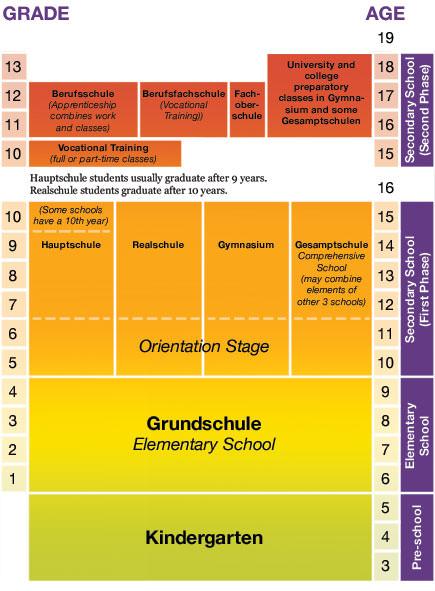The German Education System
Children aged three to six, may attend kindergarten. After that, school is compulsory for nine or ten years. From grades 1 through 4 children attend elementary school (Grundschule), where the subjects taught are the same for all. Then, after the 4th grade, they are separated according to their academic ability and the wishes of their families, and attend one of three different kinds of schools: Hauptschule, Realschule or Gymnasium. Grundschule teachers recommend their students to a particular school based on such things as academic achievement, self-confidence and ability to work independently. However, in most states, parents have the final say as to which school their child attends following the fourth grade.
Hauptschule
The Hauptschule (grades 5-9) teaches the same subjects as the Realschule and Gymnasium, but at a slower pace and with some vocational-oriented courses. It leads to part-time enrollment in a vocational school combined with apprenticeship training until the age of 18.
Realschule
The Realschule (grades 5-10 in most states) leads to part-time vocational schools and higher vocational schools. It is now possible for students with high academic achievement at the Realschule to switch to a Gymnasium on graduation.
Gymnasium
The Gymnasium leads to a diploma called the Abitur and prepares students for university study or for a dual academic and vocational credential. Curricula differ from school to school, but generally include German, mathematics, computer science, physics, chemistry, biology, geography, art (as well as crafts and design), music, history, philosophy, civics, social studies, and several foreign languages. In recent years many States have changed the curriculum so students can get the "Abi" at the end of the 12th grade. Other States are making the transition but may still require a 13th grade.
